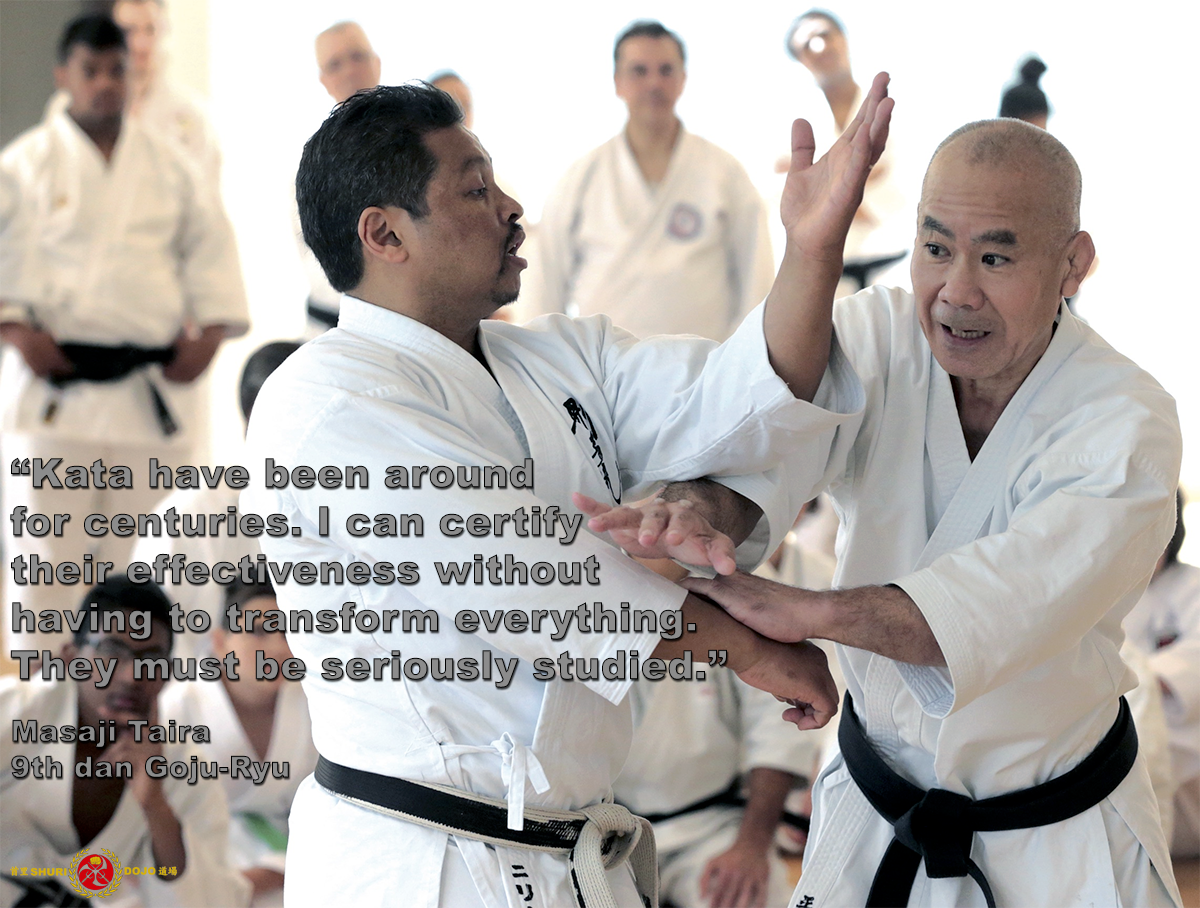
“Kata have been around for centuries. I can certify their effectiveness without having to transform anything. They must be seriously studied.” (End quote) – Masaji Taira 9th dan Goju-Ryu
.
Teachers undoubtedly have the ability to change the lives of their students. Most of us can remember a particular teacher that helped shape who we are today. An inspiring and informed teacher is among the most important factors influencing student achievement.
.
“Better than a thousand days of diligent study is one day with a great teacher.” – Japanese proverb
.
The problem with the “thousand days of diligent study”, is that students may not be introduced to anything new and instead, end up embedding mistakes into their techniques, analysis, kata and drills.
.
For example, if the student has the bad habit of doing something they don’t understand, then over a thousand tries, this habit – this mistake – becomes a part of their mindset.
.
Here, “one day with a great teacher” makes all the difference. Teachers are more than vessels of transferring knowledge to students, and offer students a way of thinking about the content they’ve studied in new ways. They allow the students to think for themselves.
.
Unfortunately, there are those who can’t think for themselves, or at least don’t want to, and blindly follow others in the name of ‘tradition’, perhaps because at the time this tradition was the accepted norm.
.
Being traditional does not mean that things do not change. It means you are following the ‘principles’ used in the past.
.
There are some instructors who cannot see that principles are preferred over technique, or at least, do not understand this concept.
.
Learning how to apply core principles correctly so that your movements become more efficient and relative, should be at the forefront of any pragmatic study. Today however, students still spend many hours perfecting the ‘look’ of techniques, without ever applying these (or their associated principles) in a functional manner. As an example, a ‘principle’ can typically be used to do ‘many’ things, whereas a technique has a SPECIFIC purpose, target, line of action, anticipated outcome, etc.
.
I view all techniques and drills to be a means to impart a principle. It’s the principle we truly need to learn and study deeply. We are given the “what” so we can learn the “why”. This has nothing whatsoever to do with style, as previously suggested (I am often asked which style I practice), but has everything to do with the creators of karate as a whole, who introduced principle over technique. ![]()
![]()
.
.
![]() Photo Credit and Masaji Taira quote: French Federation of Karate
Photo Credit and Masaji Taira quote: French Federation of Karate
.
